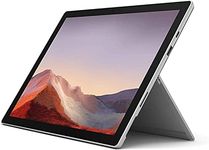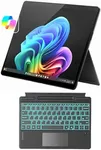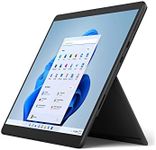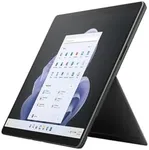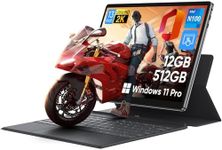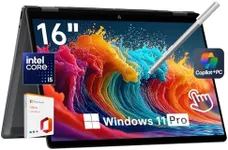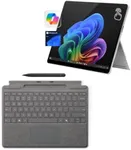Buying Guide for the Best Microsoft Surface Pro
When choosing a Microsoft Surface Pro, it's important to consider your specific needs and how you plan to use the device. The Surface Pro is a versatile 2-in-1 device that can function as both a tablet and a laptop, making it suitable for a wide range of tasks from casual browsing to professional work. To make the best choice, you should evaluate the key specifications and understand how they align with your requirements.Processor (CPU)The processor, or CPU, is the brain of the device and determines how fast and efficiently it can run applications. Surface Pro models come with different types of processors, such as Intel Core i3, i5, and i7. The i3 is suitable for basic tasks like web browsing and word processing. The i5 is a good middle ground for more demanding tasks like photo editing and multitasking. The i7 is the most powerful and is ideal for heavy-duty tasks like video editing and running complex software. Choose a processor based on the intensity of the tasks you plan to perform.
Memory (RAM)RAM is the memory that your device uses to store data that is actively being used or processed. More RAM allows for better multitasking and smoother performance. Surface Pro models typically come with 4GB, 8GB, or 16GB of RAM. 4GB is sufficient for basic tasks, 8GB is ideal for most users who run multiple applications simultaneously, and 16GB is best for power users who need to run demanding applications or virtual machines. Consider how many applications you use at once and the complexity of those applications when choosing the amount of RAM.
StorageStorage refers to the amount of space available to store your files, applications, and system data. Surface Pro models offer various storage options, usually ranging from 128GB to 1TB. If you primarily use cloud storage or don't store many large files, 128GB or 256GB may be sufficient. For users who store a lot of media files, large applications, or need to keep many files locally, 512GB or 1TB would be more appropriate. Think about your storage habits and future needs when selecting the storage capacity.
DisplayThe display is the screen where you view content and interact with the device. Surface Pro models feature high-resolution PixelSense displays, which offer sharp and vibrant visuals. The size and resolution of the display can affect your experience, especially if you use the device for creative work or media consumption. A higher resolution provides clearer and more detailed images, which is beneficial for tasks like photo editing or watching high-definition videos. Consider the importance of display quality in your daily use when evaluating this spec.
Battery LifeBattery life indicates how long the device can run on a single charge. This is crucial for users who need to use their Surface Pro on the go without frequent access to power outlets. Surface Pro models typically offer a range of battery life, often between 7 to 13 hours depending on usage. If you travel frequently or use the device for extended periods away from a power source, opt for a model with longer battery life. Assess your mobility needs and how often you can recharge the device to determine the right battery life for you.
ConnectivityConnectivity options determine how you can connect your Surface Pro to other devices and networks. Common connectivity features include USB ports, a headphone jack, a microSD card reader, and wireless options like Wi-Fi and Bluetooth. Some models may also support LTE for mobile internet access. If you need to connect various peripherals, transfer data frequently, or require internet access on the go, ensure the model you choose has the necessary connectivity options. Think about the devices you use regularly and how you plan to connect them to your Surface Pro.
Operating SystemThe operating system (OS) is the software that manages all the hardware and software on your device. Surface Pro devices typically run Windows, which is known for its versatility and compatibility with a wide range of applications. The OS version can affect the features and security of your device. Ensure that the Surface Pro you choose runs the latest version of Windows to benefit from the latest updates and features. Consider the software you plan to use and ensure it is compatible with the OS on the Surface Pro.
